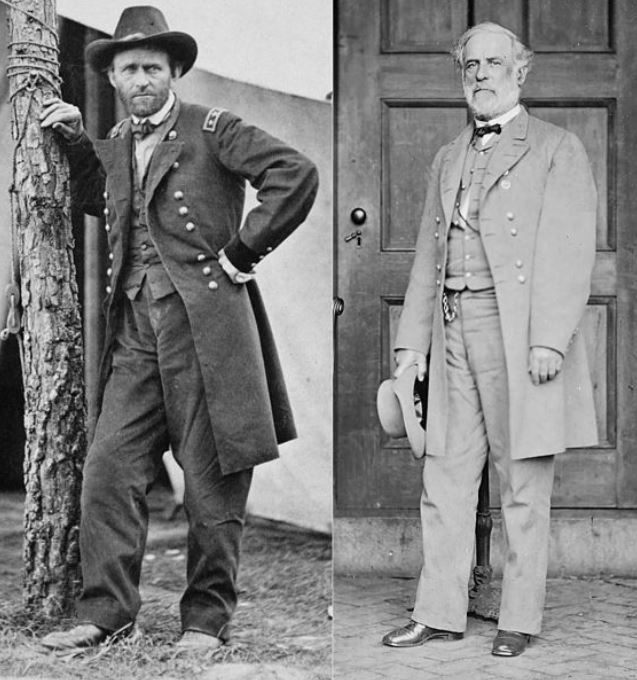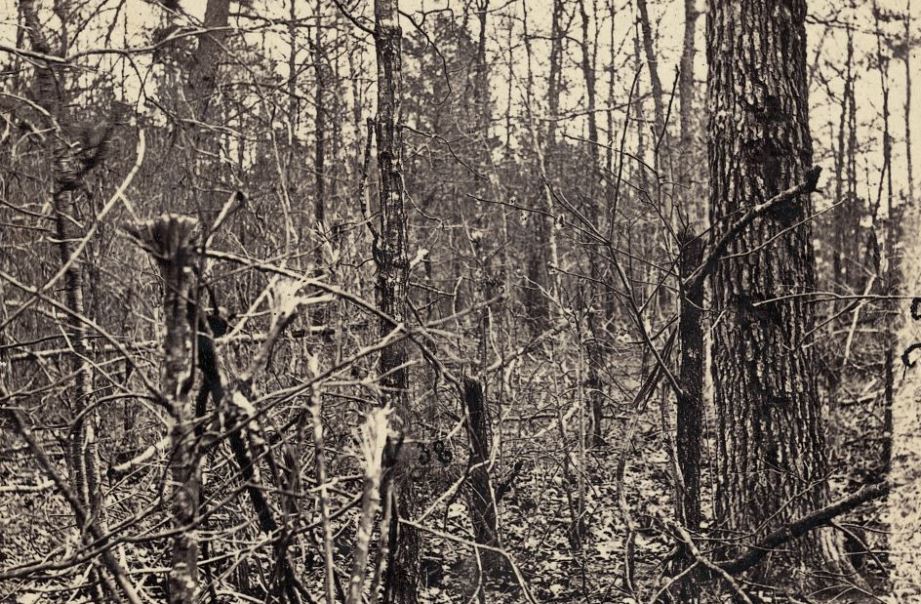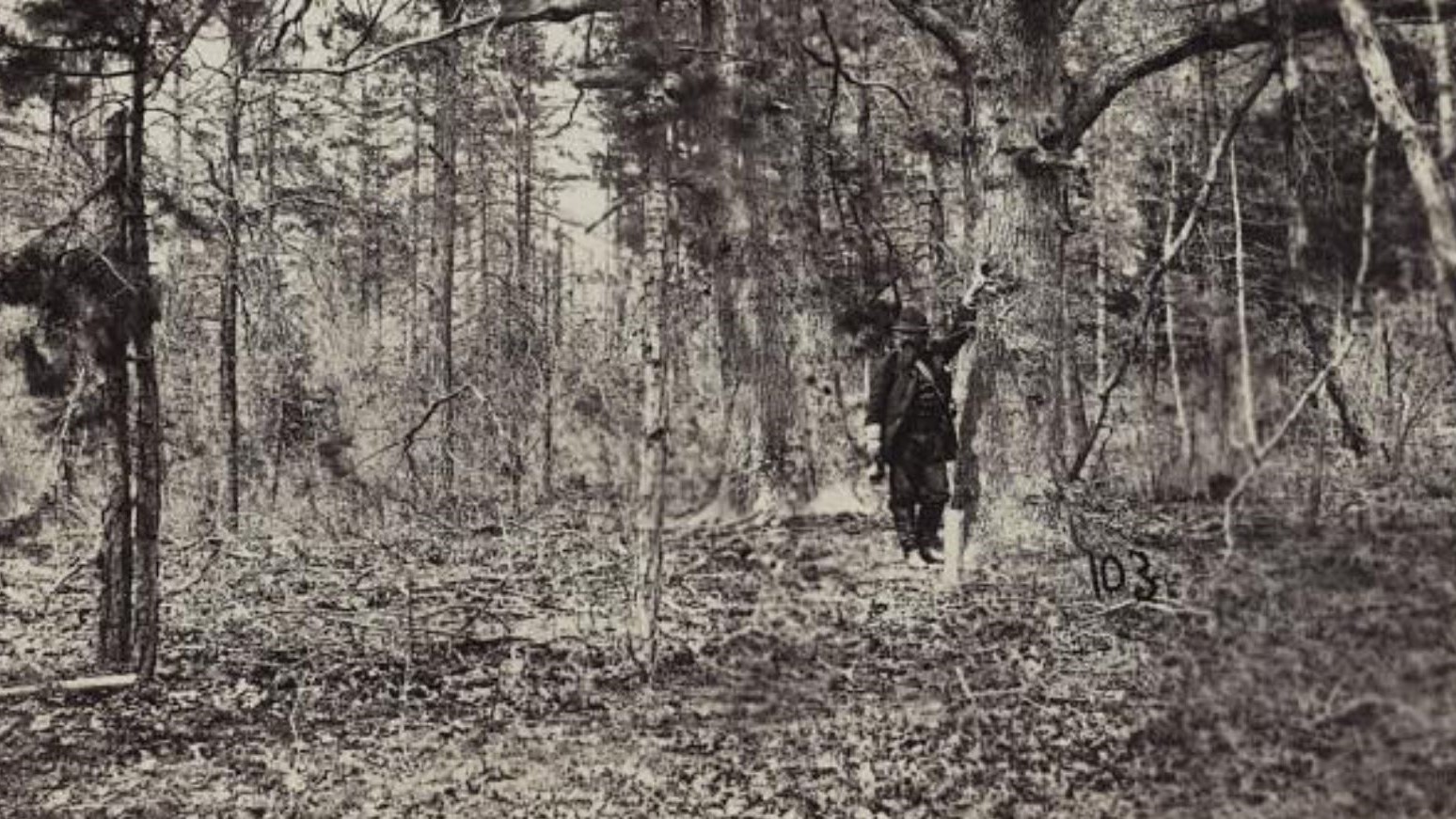The Battle of the Wilderness, fought in Virginia‘s tangled underbrush in May 1864, was one of the most hellish engagements of the American Civil War.
Over three days of furious combat, almost 29,000 soldiers fell amid the dense thickets and woods. Their agonized cries piercing the smoke-filled air.
Why was this battle so extraordinarily brutal, even by the bloody standards of the Civil War?
In this article we uncover the factors that transformed Wilderness into a slaughterhouse.
- 1. The Key Events that led to the Battle of the Wilderness
- 2. The Wilderness Terrain
- 3. Brush Fires and Wounded Soldiers in the Wilderness
- 4. General Ulysses S. Grant's Tenacity
- 5. The Massive Casualties during the Battle of the Wilderness
- 6. Why the Battle of the Wilderness was Significant
- Further Reading
1. The Key Events that led to the Battle of the Wilderness
The Battle of the Wilderness was the first major conflict of the brilliant but bloody Overland Campaign launched by Union General Ulysses S. Grant in 1864.

Union General Ulysses S. Grant‘s overall strategy was to grind down Robert E. Lee‘s Army of Northern Virginia through a relentless series of battles. Grant was willing to accept heavy casualties if needed to prevent Lee from being able to easily replace his losses.
After being appointed general-in-chief of all Union armies in March 1864, General Ulysses S. Grant put his plan into action in early May. He led the Army of the Potomac across the Rapidan River on May 4th, marching directly into the Wilderness region where Lee’s army was encamped.
Grant hoped to sweep past the Wilderness and cut off Lee’s supply lines, but Lee saw the movement and quickly positioned his forces in the Wilderness to block Grant’s advance and meet the Union army head-on.
On May 5th, the two armies literally collided in the dense woods of the Wilderness area.
What was intended to be a quick brushing aside of Lee’s army instead devolved into a grueling, up-close slugfest in the Wilderness’ overgrown landscape. The violence and horror that unfolded over the next three days would make it an unforgettable battle for its sheer brutality.
2. The Wilderness Terrain
The Wilderness region of Virginia was well named – it consisted of a dense tangle of oak and pine forests, thick undergrowth, and alternating swamps and rocky terrain.

The area had previously been logged and farmed, but by 1864 much of the landscape had reverted to an overgrown, almost impassible state.
This wilderness setting made for a formidable battlefield.
The woods were so choked with brush, vines, and saplings that visibility rarely extended beyond 100 yards in any direction.
Soldiers struggled to move in orderly formations through the cluttered terrain, their progress constantly checked by brambles, fallen trees, and the oppressive closeness of the forest.
Negating the Union’s Advantages
The landscape of the Wilderness severely negated the distinct advantages held by the larger Union army under Grant. Their superior numbers and overwhelming edge in artillery became almost irrelevant factors in the battle.

With the armies fighting at such close range in the woods, the Union could not leverage its greater manpower to outflank Confederate forces.

The rough terrain confined the battle to a relatively compact area and prevented either side from effectively massing their troops.
The heavily forested setting also rendered field artillery almost useless during most of the fighting. The dense woods blocked effective deployment of the big guns, robbing the Union of one of its key firepower advantages over Lee’s army.
Visibility and Movement Restricted
Moving and maintaining cohesive units amidst the overgrown tangle of the Wilderness proved extremely challenging for both sides, but limited visibility was an even deadlier factor.
Soldiers often could not see more than 100 feet in any direction. Units became separated and intermingled with the enemy in the maze-like landscape, creating mass confusion and panic.
Close Quarters and Friendly Fire Chaos
The terrain funneled soldiers into a series of desperate, close-quarters battles where the combat took on a chaotic, almost uncontrollable character.
Adversaries were sometimes just yards apart.
In such an environment, tragedy was inevitable as the “fog of war” descended across the Wilderness:
- It became nearly impossible to distinguish enemies from friends
- Units mistakenly fired on and killed their own comrades
- Volleys of musket fire felled men on both sides
- Panic spread through the ranks as soldiers lost sight of their officers
- Wounded were often hit again by additional wild shots
The Wilderness had essentially disintegrated the battle into a multitude of smaller, horrific engagements where order broke down amidst the smoke, noise, and claustrophobic vegetation.
3. Brush Fires and Wounded Soldiers in the Wilderness
Dry Conditions and Heavy Firepower

In early May 1864, the Wilderness area was blanketed in dead brush, leaves and twigs from the previous fall – all dried to a crisp tinder by the spring heat.
These conditions created an environment ripe for wildfires to ignite and spread rapidly.
The Battle of the Wilderness involved two huge armies engaged in fierce combat while firing thousands upon thousands of musket and artillery rounds. The heavy concentration of firepower provided the crucial spark where sudden brush fires erupted across the battlefield.
As the two days of battle raged on, the woods soon began to burn in dozens of locations from the stray flames. What had begun as a few isolated blazes quickly coalesced into an all-consuming fire.
Fiery Death Traps
The brush fires burning across the Wilderness turned much of the battlefield into a hellish maze of fire, smoke and suffering for the wounded of both armies.
As the fires expanded, many of these poor men found themselves trapped. The blazes hungrily consumed the thick underbrush, advancing to cut off paths of retreat.
Wounded who lay helpless as these fires and smoke engulfed them.
Horrific accounts describe wounded men burned alive where they fell, their anguished screams drowned out by the roar of flames.
Others managed to drag themselves a short distance only to suffocate from the thick, choking smoke that turned day into night across sections of the battlefield.
The scenes of suffering were apocalyptic, with the brush fires adding immense cruelty to the already brutal combat:
- Charred remains of soldiers covered the blackened forest floor
- The air was choked with an acrid mix of smoke, burned flesh and gunpowder
- Blood-curdling screams of men being burned alive
- Fires so intense they consumed the very ground underfoot
- Rescue attempts overwhelmed by the all-consuming firestorm
While combat injuries were gruesome enough, to burn to death amid the Wilderness’ flames represented a level of suffering perhaps unmatched on any other Civil War battlefield.
4. General Ulysses S. Grant’s Tenacity

One of the defining factors that made the Battle of the Wilderness so brutal was the sheer tenacity and iron resolve of Union General Ulysses S. Grant.
Despite taking staggering casualties, Grant refused to break off the offensive against Lee’s forces after the first two days of fierce combat on May 5th and 6th.
Previous Union commanders may have ordered a retreat from the blazing hell of the Wilderness after suffering such losses. But Grant had no inclination to disengage.
His offensive strategy hinged on relentlessly pursuing Lee’s army, avoiding the stalemate of previous campaigns by refusing to fall back.
Grant exhibited an industrialized attitude toward the ghastly losses. He viewed the lives of his soldiers as part of the grim expenditure needed to destroy Lee’s army through a war of attrition. His remorseless tenacity only compounded the brutality.
A commander of lesser resolve may have terminated the battle sooner.
5. The Massive Casualties during the Battle of the Wilderness
The brutality of the Battle of the Wilderness is starkly reflected in the catastrophic number of casualties suffered by both armies over the three days of fighting. The toll was staggering:
- Total casualties: Nearly 29,000 men killed, wounded or captured
- Union casualties: Around 18,000
- 2,250 killed
- 12,000 wounded
- 3,750 captured/missing
- Confederate casualties: Around 11,000
- 1,750 killed
- 7,750 wounded
- 1,750 captured/missing
These numbers represented over 17% of the total troops engaged being put out of action.
Entire regiments were decimated, their remaining members huddling in stunned clumps amid the smoldering stumps and burned brush.
The ability to treat and evacuate the thousands of wounded was also severely compromised by the nature of the battle.
Field hospitals and aid stations were frequently overtaken by shifting combat or overrun by the rapidly spreading brush fires. Medical supplies quickly ran low as the casualties mounted.
Many wounded were left to suffer for days without treatment.
Others died from relatively minor wounds due to lack of timely care.
The dense woods and narrow roads choked with dead animals and wrecked equipment made transporting the injured extremely difficult as well.
6. Why the Battle of the Wilderness was Significant
While a tactical stalemate, the Battle of the Wilderness gained immense historical significance for several reasons.
First and foremost, it announced the arrival of a new, more brutal phase of the Civil War in Virginia under the leadership of Ulysses S. Grant.
Grant’s willingness to accept massive casualties to grind down the Confederate forces represented a philosophical and strategic shift. Grant instead treated casualties as simply the unavoidable cost of his attritional strategy to destroy Lee’s army.
The Wilderness foreshadowed how Grant would relentlessly pursue that objective over the summer of 1864 during his Overland Campaign. Battles like Spotsylvania Court House and Cold Harbor would inflict casualties on an unprecedented scale as Grant repeatedly hurled his men against Lee’s outnumbered but well-entrenched rebels.
Secondly, the gruesome conditions and staggering loss of life from the Wilderness battle shocked the nation.
The brutality and suffering transcended anything previously experienced. Harrowing accounts of helpless wounded being torched alive by the brush fires appalled the public.
The age of industrial warfare capable of inflicting mass casualties within confined spaces had arrived.
Further Reading
If you enjoyed this article, you may be interested to read more about the American Civil War events, such as battles in Virginia, Maryland and North Carolina or more general American history.








It’s a shame you don’t have a donate button! I’d certainly donate to
this fantastic blog! I suppose for now i’ll settle for book-marking and adding your RSS feed to my
Google account. I look forward to brand new updates and will talk about this website with my Facebook group.
Chat soon!
Thank you for your comments